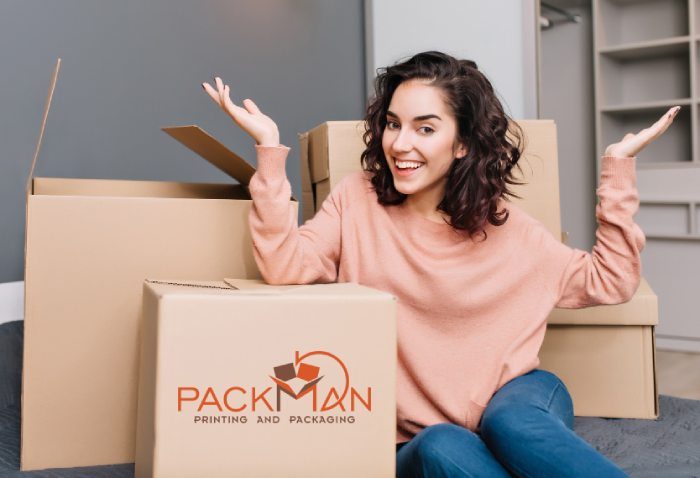As you might have gotten a hint from the heading, we are talking about those challenges that are frequently faced by several packaging companies. This problem may vary from size, specifications, or other factors but they do exist as explained by India’s top corrugated boxes manufacturing company Packman Packaging.
Challenge 1: Hiking stacking strength for rigid packaging
Typical question that arises with respect to packaging strength are:
How to make sure that the packaging is not damaged during transit?
The packaging gets deformed while the items are stacked. How to avoid this?
Solution 1
One of the problems that were seen during the analysis was that the oil bottles were shrinking. This happened due to the oil-absorbing oxygen, thus, creating a vacuum. If you are having a similar problem, you may need to re-examine the operational processes within the scope of your industry and product.
Solution 2
The thing related to rigid packaging is that it gets exposed to stress while the packaging comes in contact with external surfaces during the stacking or transporting. The underlying meaning here is that the bigger the surface area that comes into contact with other external surfaces, the higher will be the stress on the packaging.
Outcome? Higher probability of the packaging getting damaged.
This issue could be addressed by making alterations to the packaging structure to decrease the packaged product’s contact with external surfaces. For instance, in packing round surfaces are chosen over square surfaces. Another method to avoid damage will be to consider the thickness of the packaging material in areas of the highest pressure such as the base.
Solution 3
Another way of resolving packaging issues related to strength is to have a functional design modification. What does it mean? Well, this may mean several things and could vary based on details like the packaging material one is using as well as the product that is being packaged.
Solution 4
If you have already used the options above, and the issue still persists, then reconsidering the form of that packaging could be the way forward. It does not mean that the earlier solutions will not solve the problem. However, it is possible that having one of these solutions might lead to an extra set of problems. For instance, altering the structure of the bottle could decrease brand visibility on the label – a nightmare for brand owners.
Though a full deviation from the initial form could be a sharp pivot for any brand, a well-planned strategy could have its own set of perks. For instance, a stand-up pouch for oil has several upsides such as increased branding space because of a bigger label, less inventory space, and it can be stacked without creating any deformations.
It does not imply that all packaging challenges linked to damage need a long distant solution. Some solutions could be fairly straightforward. For instance, glassware is damaged during transit. The solution to this is simple and needs reducing contact of the glass products with each other. Recommended solution? Foam nets must be used as void fills around each product in a set.
Packaging challenge 2: Minimizing transportation and delivery cost of the packaging
Decreased costs translate to raised margins. Hiked margins lead to more profit and it leads to business growth. So, the question is: How to optimize costs linked with packaging?
Case 1: Optimizing delivery expenses for eCommerce products via packaging
Ecommerce packaging comes with its own set of peculiar specifications that require to be met.
- From a delivery standpoint, the shape and the weight are vital elements that need to be kept in mind at the time of product development.
- The package design must be attractive as the purchase decision is made by seeing the product online. Also, an appealing design will help lead to a pleasant unboxing experience for the customer.
- In an effort to achieve cost-effective shipping, the order size needs to be big enough. This often means that products are either bundled or their minimum quantity is hiked to reach an agreeable price point.
As an example, a company looking to sell nutritional chocolate supplements. The goal for them is to design a package that would be bigger, have more quantity of chocolates and will come along with a toy inside.
Keeping in mind eCommerce packaging constraints, it is recommended to use a corrugated box instead of any plastic tub. The aesthetics of the box will be maintained using micro-fluted corrugation. It will help to accomplish the costs to come down and the box will be protected.
Case 2: Optimizing logistics expenses via tertiary packaging
Suppose you are an automotive part manufacturer and looking for a method to reduce logistics expenses. This can be achieved via improvising on the existing tertiary packaging. So here’s what could be done. The products in question are automotive batteries. Suppose earlier cartons were used and are now being replaced with foldable crates which could be returned to the manufacturer and reused while transporting for further consignments.
Result? A sustainable solution with decreased costs is on its way.
Challenge 3: Forming eco-friendly and recyclable packaging
Having sustainable packaging is a priority and a challenge being faced by all. One of the needs is to develop sustainable laminate packaging for sauces by a company.
Usually, laminates are made of two or more flexible packaging webs, joined together using a bonding agent. The material that is used to make these webs mostly belong to different families of raw material depending on the requirement. Once fused together the laminates then it cannot be recycled.
Whereas, sustainable laminate layers are made using raw materials that come from the same family. It means that the packaging product can now be recycled and used again.
Challenge 4: Differentiating products via packaging
It’s not new, but an important one for all. Suppose you need your brand to spread across territories and need to stand out. Quite often, in a bid to match the competition, designers take a traditional way, resulting in a design that matches the competition instead of standing apart. Here designers need to take a different approach and need to dive deep into the company’s background and roots to come up with designs that resonated with the brand’s vision.
Assume there is an oil product, and look for a plastic tub option. in-mould Labelling is one option instead of standard labels, as they are pre-printed and placed in the mould and take the shape of an end product. Here the product and packaging are fused into one. It lends more branding space on the label having high print quality, shorter production time and reduced production cost, and higher resistance to external wear and tears.





